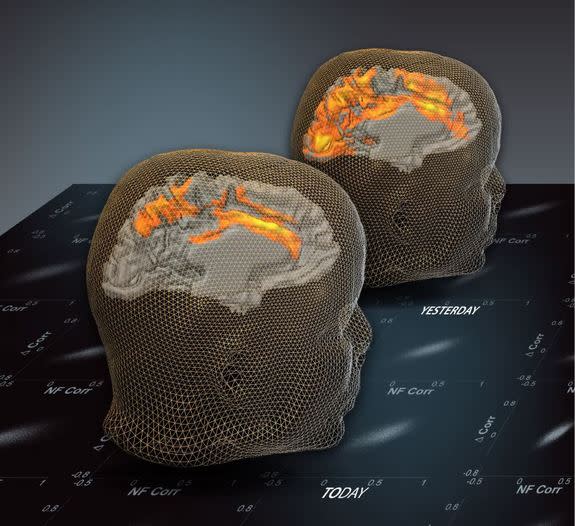Brainwaves Reveal Your Past and Might Predict Your Future

Scientists have recently discovered that the human brain bears the imprint of earlier events for at least 24 hours after the experience has taken place.
That means that scientists could one day be able to uncover your personal history just by looking at your brain. And your unique brain wave pattern could also offer up some clues as to what makes you different from everybody else.
The new research stems from earlier research in the Weizmann Institute's neurobiology department regarding the constant activity of the human brain. Even when you are sleeping, you're brain is not.
When your eyes are open and processing visual information, your brain experiences bursts of nerve cell activity. When your eyes are closed, these bursts are replaced by super-slow brainwaves, known as "spontaneous" or "resting" brainwaves.
Spontaneous brainwaves are easy to spot. They're complex, but highly organized and symmetrical, and they always travel through the same part of the brain- the outer layer, or cortex.
Weizmann researchers believed that the patterns of these resting waves might provide some insight into what makes each person unique. Their idea was that the waves' patterns constitute "archives" for earlier experiences.
This hypothesis was supported by the fact that our brains do have the ability to change over the long term. As we add new experiences, the links between brain cells change, a facility known as plasticity.
Plasticity plays a key part in helping us anticipate what the result of a particular action will be before we perform it.
By examining these plasticity links, the researchers thought they could determine if an individual's recent experiences show up in the brain's spontaneously emerging brainwave patterns.
To test their hypothesis, researchers had volunteers undergo a training exercise that strongly activated a well-defined network of nerve cells in the cortex.
The subjects' brain activity was monitored using a functional magnetic resonance imaging scanner (fMRI) before, immediately following and 24 hours after the training exercise to see if the activity in any way affected the pattern of resting brainwaves.
The researchers were surprised to find that the experience of undergoing the training activity not only changed the resting brainwave patterns right after it occurred, it actually strengthened new links between brain cells, even 24 hours later.
The finding has implications for understanding human individuality, scientists say. A person's spontaneous brainwave patterns could display not only information about recent events but, if monitored over time, could also reveal a sort of personal profile of that person's brain. For example, what connections does your brain make easily? Which is it bad at making?
The things you've only ever suspected about yourself could be proven true or false by a "brain map" displaying your unique abilities, shortcomings, biases and learning skills.
"Today, we are discovering more and more of the common principles of brain activity, but we have not been able to account for the differences between individuals," said Rafi Malach, a professor in Weizmann Institute's Neurobiology Department and one of the researchers conducting the study.
"In the future, spontaneous brain patterns could be the key to obtaining unbiased individual profiles."
Researchers believe that such profiles would be especially useful in diagnosing or learning the brain pathologies associated with a wide array of cognitive disabilities.
[See also: 5 Crazy Technologies That Are Revolutionizing Biotech]
This story was provided by TechNewsDaily, a sister site to LiveScience. Follow Elizabeth Palermo on Twitter @techEpalermo or on Google+. Follow us @TechNewsDaily, on Facebook or on Google+.
Copyright 2013 LiveScience, a TechMediaNetwork company. All rights reserved. This material may not be published, broadcast, rewritten or redistributed.

